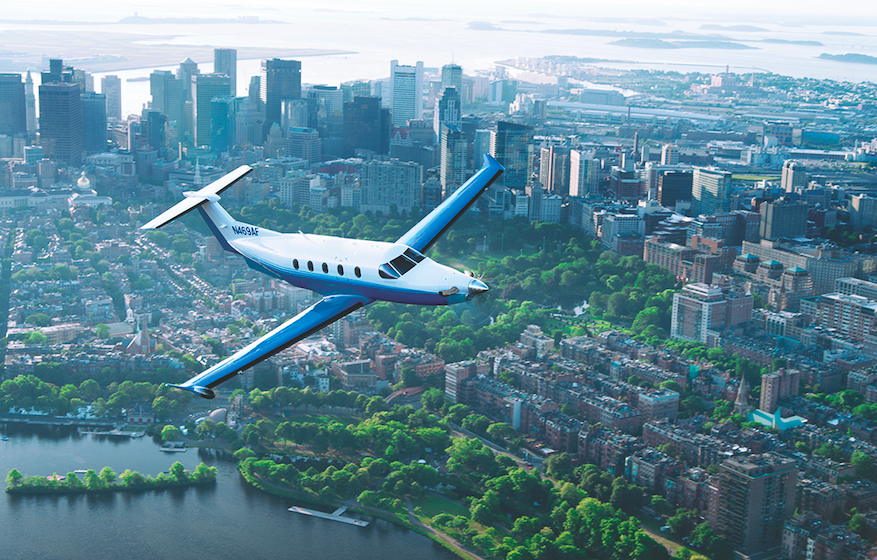
The number of jet card programs and providers has more than doubled in the past 10 years in large part because card memberships are the easy way to charter an aircraft – as close to that tap and go Uber analogy many like to use as you can get. What’s more, you can buy jet cards in chunks ranging from five hours up to 100 hours, so you don’t have the three to five-year commitment of buying a fractional aircraft share. Of course, the trick is finding the right program for your needs, and while many programs offer all sizes and shapes of jets, not all programs off turboprop or piston solutions.
Nobody has been more instrumental in driving the acceptance of non-jet jet cards than Wheels Up founder and CEO Kenny Dichter. A co-founder of the Marquis Jet card before selling it to NetJets in 2010, in 2013 he was back singing the praises of the Beechcraft King Air 350i, which he describes as a driveway equivalent of a Jeep or Rover.
Dichter makes the case that on flights under 90 minutes, a good chunk of flying is climbing to or descending from cruising altitude, both of which are done at below maximum speeds. In other words, you might add only 10-15 minutes of actual travel time even though the props are slower. In congested areas, such as the Northeast U.S. where flights are often put into holding patterns or slowed to like speeds, there is no difference between a jet and turboprop, he adds.
Another area turboprops can make a lot of sense is when you have a larger group – say eight people flying a 75-minute flight. You might not be able to get eight people into a light jet or even a medium jet, but a King Air 350 or Pilatus PC-12, no problem. What’s more, the daily and segment minimum for turboprops is typically 60 minutes whereas a Midsize or Super Midsize jet might have a 90-120 minute minimum. In other words, going from Los Angeles to Las Vegas, a turboprop may be the most cost-effective solution, which brings us to the last point. You can save money in many instances flying a turboprop or piston aircraft.
In the table below we’ve highlighted 14 companies that offer jet cards featuring turboprops and/or piston aircraft. We’ve also outlined whether or not each provider offers guaranteed availability (if you call by a specific time, you are guaranteed to get an aircraft) and fixed one-way pricing at contracted rates (so you don’t have to pay ferry charges). Lastly, we’ve provided the starting price for each provider’s turboprop or piston program. Of course, if you want to compare all the companies by more than 65 variables, including safety, aircraft sourcing and pilot standards, as well as peak days, surcharges and other fees, you can subscribe to Private Jet Card Comparisons and you will have full access to our easy-to-use spreadsheets.
| Jet Card Provider | Guaranteed Availability at Contracted Rate | Fixed One-Way Rates (No Ferry Fees) | Jet Card Price Starting From |
| Concord Private Jet | Yes | Yes | 10 hours at $37,500 |
| Executive AirShare | Yes | Yes | 10 days |
| ExpertJet | No | No | $8,000 membership then pay-as-you-go dynamic pricing |
| Fly Aeolus | Yes | Yes | 15 hours at 10,000 Euros |
| Luxury Aircraft Solutions | Yes | Yes | 5 hours $21,260 |
| Nicholas Air | Yes | Yes | 15 hours at $74,700 |
| ONEFlight International | Yes | Yes | 25 hours at $85,350 |
| Paramount Business Jets | No | No | $50,000 dynamic pricing |
| PrivateFly | No | No | $50,000 dynamic pricing |
| Silverhawk Aviation | Yes | Yes | $100,000 with fixed pricing |
| Star Jets International | No | No | $50,000 dynamic pricing |
| StraightLine Private Air | No | No | $50,000 dynamic pricing |
| Unity Jets | No | No | $25,000 dynamic pricing |
| Wheels Up | Yes | Yes | $17,500 membership plus pay-as-you-go $4,495 per hour |
Source: Private Jet Card Comparisons comparison of turboprop jet cards